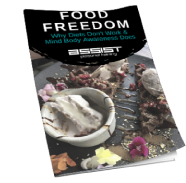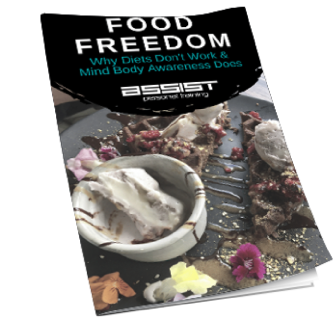 This is what you may find on the ingredients list for a slice of processed cheese: Milk, Milk Solids Non Fat, Cream or Butter, Food Acids (270, 331), Mineral Salts (339, 341), Salt, Preservative (200), Natural Colour (160b), Starter Cultures, Enzymes, Vitamin D3.
This is what you may find on the ingredients list for a slice of processed cheese: Milk, Milk Solids Non Fat, Cream or Butter, Food Acids (270, 331), Mineral Salts (339, 341), Salt, Preservative (200), Natural Colour (160b), Starter Cultures, Enzymes, Vitamin D3.
When reading labels, the more ingredients listed, the more the food has been altered from its natural state. Anything listed as a number has been created in a lab, not from anything natural. Healthy eating starts with consuming foods that are closest to their natural source. The more it’s been processed and altered from it’s original state, the less healthy it becomes.
Take for example this slice of individually wrapped processed cheese made from all the ingredients listed above!
The quality and availability of our food has undergone more changes in the past 130 years than it has all the years before this since mankind began. Today, most people live their life consuming foods that have only become available or more easily accessible since the late 1800’s. It’s no surprise we’ve seen such a big increase in what’s known as modern day diseases such as diabetes, heart attacks, lung cancer, food sensitivities and auto immune disease to name a few.
Food manufacturing began in the late 1800s. Coca cola was invented in 1886. Trans fats were invented in the 1890’s, and entered the food supply in the 1910s. Hotdogs, mayonnaise, oreo cookies, crisco oil were some of the first foods containing trans fats to hit the market. Condiments, canned and frozen foods became more popular in the 1920s.
Colonel Harland Sanders invented his secret spicy chicken formula in the 1930s which was served out of a café in Kentucky, which soon went on to create the fast food chain Kentucky Fried Chicken. In 1927 Wonder Bread hit the American market as a government sponsored experiment dubbed “the quiet miracle” to enrich white bread with vitamins and minerals as a way of helping boost the health of the poorer people who were suffering with deficiency diseases but what officials never acknowledged was the fact that it was this new foods themselves that were impoverished.
In the 1930’s the Australian bakery franchise known as Procera prided themselves on their baking process which involved enriching flour with gluten to boost the protein content and reduce the starch to improve its texture, a very normal process in todays bread making industry. In 1930 we also saw the world’s first ever supermarket open in Long Island, New York.
Coca cola bottling lines hit Australia in 1938. Supermarkets began to pop up in Australia from 1957, starting with the first Woolworths store in Sydney’s Dee Why. This also sparked the introduction of easily accessible packaged foods into our diets.
Production of bread making sped up when industrial manufacturers took on the market in 1961 when the speed of turning wheat into a loaf of bread sped up to a 3 hour turnaround.
Wheat manufacturing became a profitable industry. In 1968 fast food chains began to roll out in Australia, starting with KFC, then Burger King, Hungry Jacks and Australia’s first McDonalds “Family Restaurant” in 1971.
The production of the low erucic acid varieties of rapeseed oil extracts, known as canola oil hit the shelves in 1976. The late 1970s also saw the introduction of High Fructose Corn Syrup, (although Australia tends to use cane sugar in place of HFCS, which is cheaper and more readily available over here. Cane sugar is 50 per cent glucose and 50 per cent fructose. High fructose corn syrup is about 55 per cent fructose and 45 per cent glucose) and in 1994 the worlds first GMO food was produced.
40,000 years ago, back before industrial farming, we ate based on what was available to us. Things that were hunted, fished, gathered or plucked. We ate real foods, better quality foods, foods that didn’t have labels.
Hit up your local farmers market or fruit and veg shops to feel a change your body and mind will thank you for.





